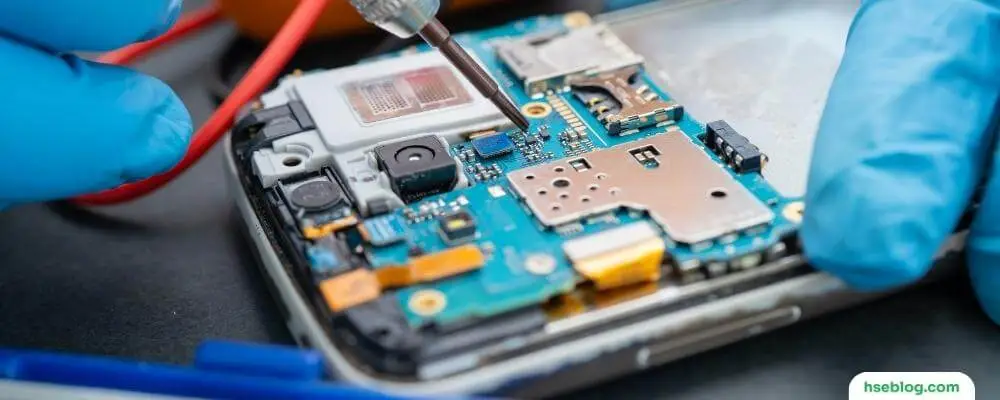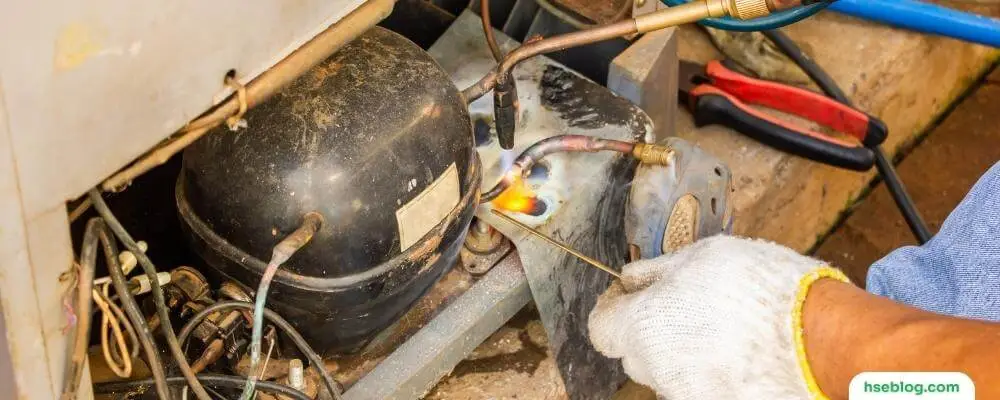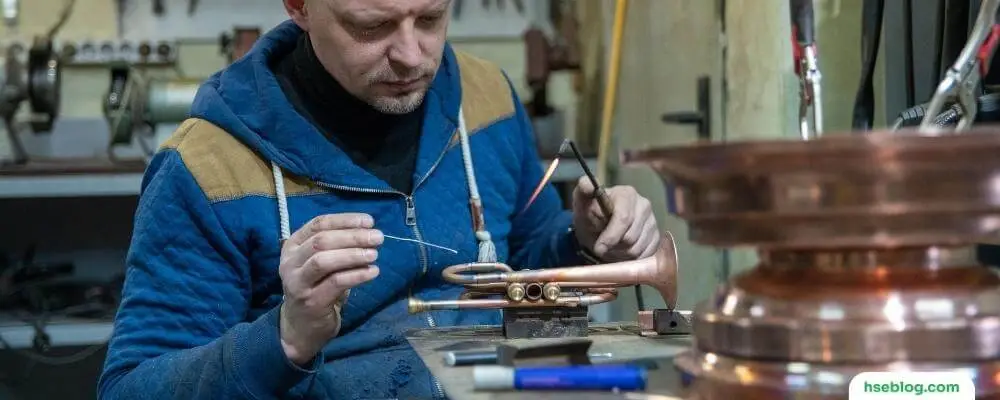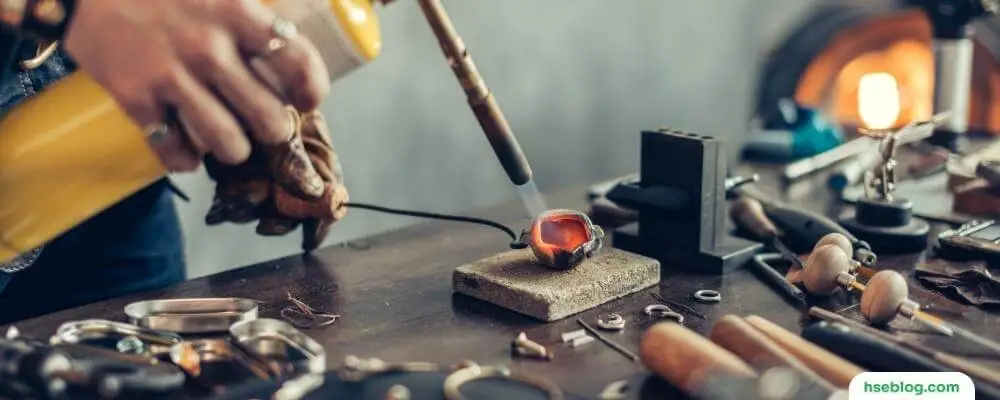In the world of metalwork, two techniques stand out for joining pieces of metal together: soldering and brazing. Both methods are widely used in various industries due to their versatility and effectiveness. However, risks are involved in any process involving high temperatures and potentially hazardous materials.
In this blog post, we will delve into the specifics of soldering and brazing, demystifying the differences between the two techniques. More importantly, we will shed light on the potential hazards associated with each process and discuss the important safety precautions that must be followed to ensure safe operations.
Whether you are a professional in the industry, a student learning the trade, or simply interested in understanding more about these common metal-joining techniques, this post will provide valuable insights. We’ll explore the essential risk assessments for these processes and outline control measures that can help mitigate the risks.
Soldering Vs Brazing
Soldering and brazing are two metal-joining processes that involve using heat to melt a filler material, which bonds the pieces of metal together when it cools and solidifies. Both processes do not melt the base materials, only the filler material.
Soldering
Soldering involves melting a filler material, or solder, to combine pieces of metal. The solder typically has a lower melting point than the metals being joined. When the solder is heated, it flows into the gap between the two pieces of metal, forming a bond as it cools and solidifies. This process is typically used for electrical connections, plumbing, and jewellery-making.
Brazing
Brazing, on the other hand, is similar to soldering but is performed at higher temperatures. A filler material known as braze is used in brazing, which typically has a higher melting point than solder. The higher temperature creates a stronger bond than soldering. It is often used for joining metals subjected to high temperatures or pressures, like pipes in heating systems or parts in an engine. The capillary action, where the liquid filler metal flows into the tiny spaces between the close-fitting parts due to the surface tension, is also vital in brazing.

Difference Between Soldering And Brazing
The key difference between soldering and brazing is the temperature at which the filler material melts. Soldering is done at lower temperatures, typically below 450 degrees Celsius (842 degrees Fahrenheit), while brazing is performed at temperatures above this threshold.
Both processes are widely used in various industries. However, as the earlier part of the article highlighted, it is crucial to recognize the potential hazards of brazing and soldering and take necessary precautions to ensure safe working conditions.
| Aspect | Soldering | Brazing |
|---|---|---|
| Melting Temperature | Below 450 degrees Celsius (842°F) | Above 450 degrees Celsius (842°F) |
| Filler Material | Solder (usually tin-based alloys) | Braze (usually copper, silver, or nickel-based alloys) |
| Joint Strength | Generally weaker joints | Stronger joints |
| Applications | Maybe less corrosion-resistant | HVAC, pipework, engines, structural components |
| Thermal Conductivity | Lower thermal conductivity | Higher thermal conductivity |
| Distortion | Less likely to cause distortion in base metals due to lower temperatures | More likely to cause distortion in base metals due to higher temperatures |
| Gap Filling | Less effective at filling larger gaps | More effective at filling larger gaps |
| Corrosion Resistance | May be less corrosion-resistant | Generally more corrosion-resistant |
| Cost | Typically less expensive | Typically more expensive |
| Heat Source | Soldering iron, hot air gun, or lower temperature torch | High-temperature torch, furnace |
| Skill Required | Generally easier and requires less skill | Requires more skill and expertise |

Soldering And Brazing Hazards and Safety Precautions
Brazing and soldering are processes used to combine metal pieces, but like any processes involving heat and potentially hazardous materials, they come with risks. Here are the hazards associated with each process and the control measures that can be put in place to ensure safety.
Soldering And Brazing Hazards
- Fume and Gas Exposure: Both soldering and brazing can produce toxic fumes that are hazardous to health if inhaled.
- Fire and Explosion: The heat involved in these processes can lead to fire or explosion if flammable materials are nearby.
- Burns and Heat: Due to the high temperatures, there is a risk of burns and heat stress in some circumstances.
- Eye Damage: The intense light and flying sparks can cause eye damage.
- Noise: Brazing and soldering can sometimes produce harmful noise over long periods.
- Exposure to Hazardous Materials: Certain filler materials, fluxes, or base metals may contain hazardous substances such as lead, cadmium, or beryllium, which can be harmful if inhaled or come into contact with the skin.
- Electric Shock: Electric soldering equipment may pose a risk of electric shock if not handled properly or if the equipment is faulty.
- Ergonomic Injuries: Repetitive motions or uncomfortable positions during soldering or brazing can lead to musculoskeletal disorders over time.
- Slips, Trips, and Falls: The work area may have cords, equipment, or spillages that can cause slips, trips, or falls.
- Chemical Burns: Fluxes used in soldering and brazing can sometimes be corrosive and cause chemical burns if they come into contact with the skin.
- Cut Hazards: Handling metals may expose workers to sharp edges, posing a risk of cuts or lacerations.
- Confined Space Hazards: Sometimes, soldering and brazing work might need to be done in confined spaces, which have risks, including restricted movement, lack of ventilation, and difficulty in an emergency evacuation.
- Inadequate Lighting: Poor lighting in the work area can lead to eye strain and increase the risk of accidents.
- Molten Metal Splatter: There is a risk of molten metal splattering, which can cause burns or eye injuries.
- Respiratory Problems: Long-term exposure to fumes without proper protection can lead to respiratory problems such as asthma or lung diseases.
- Mental Stress and Fatigue: Monotonous or highly demanding tasks in soldering and brazing can lead to mental stress and fatigue.
- UV Radiation Exposure: During brazing, the high temperature can produce ultraviolet (UV) light which could lead to skin burns or ‘arc eye’.

Control Measures
- Ventilation: Use local exhaust ventilation (LEV) to remove fumes and gases from the workspace.
- Personal Protective Equipment (PPE): Wear appropriate PPE such as safety glasses, face shields, heat-resistant gloves, and aprons.
- Proper Storage: Store flammable and explosive materials away from the working area.
- Training: Ensure all workers are properly trained on the equipment and understand the risks of brazing and soldering.
- Fire Safety Measures: Have appropriate fire safety measures, including access to fire extinguishers and a fire safety plan.
- Equipment Maintenance: Regularly maintain and check equipment to ensure it’s in good working order.
- Noise Control: If necessary, use noise control methods such as sound barriers or earmuffs to reduce noise exposure.
- Material Safety Data Sheets (MSDS): Ensure that Material Safety Data Sheets are available and understood by all employees for all chemicals and materials used in the soldering and brazing process.
- Regular Breaks and Ergonomic Assessments: Implement a schedule for regular breaks to reduce fatigue and conduct ergonomic assessments to ensure workstations are designed to minimize strain and repetitive stress injuries.
- Workplace Organization: Keep the work area clean and organized. Ensure that all cables and tools are managed to avoid a tripping hazard. Clean any spillages immediately.
- First Aid Kit and Training: Have a first aid kit easily accessible and ensure that workers are trained in basic first aid, especially in dealing with burns and chemical exposures.
- Electrical Safety Practices: Ensure all electrical equipment is grounded, regularly inspected, and maintained. Train employees on electrical safety practices.
- Proper Handling and Disposal of Chemicals: Train workers on handling, storing, and disposing of chemicals used in soldering and brazing to minimize exposure and environmental impact.
- Safety Signage and Markings: Use safety signage and floor markings to indicate hazardous areas and to remind workers to use PPE.
- Use of Screens and Shields: Utilize screens or shields to protect against molten metal splatter and UV radiation exposure.
- Confined Space Procedures: Implement strict procedures for working in confined spaces, including permits, ventilation, monitoring, and rescue plans.

Soldering And Brazing Risk Assessment
Risk assessment is crucial to ensuring safety during soldering and brazing operations. It involves identifying potential hazards, evaluating the risk, and implementing measures to control them. Below is an example of how a risk assessment might be conducted for soldering and brazing tasks.
Identify the Hazards:
- Exposure to harmful fumes and gases
- Burns and injuries from high temperatures
- Eye damage from intense light and flying sparks
- Electric shock from faulty equipment
- Exposure to hazardous materials like lead, cadmium, or beryllium
- Ergonomic injuries from repetitive motion or poor posture
- Slips, trips, and falls due to cords, equipment, or spillages
- Noise-related injuries from prolonged exposure to high decibel levels
- Other hazards as mentioned in previous sections.
Who Might be Harmed and How:
- Workers involved in the soldering or brazing could inhale harmful fumes, suffer burns or eye damage, or experience ergonomic injuries.
- Other workers in the vicinity could be exposed to noise, trip hazards, or harmful fumes.
- Cleaners or maintenance staff could be exposed to residual hazardous materials.
Evaluate the Risks and Decide on Precautions:
- Ensure using local exhaust ventilation (LEV) to remove harmful fumes.
- Implement personal protective equipment (PPE) like safety glasses, face shields, heat-resistant gloves, and aprons.
- Provide safety training on the use and maintenance of equipment, hazard recognition, and how to respond to emergencies.
- Implement safe work procedures, including regular breaks, proper posture, and ergonomics.
- Ensure proper storage and handling of hazardous materials.
- Implement a noise control program, including using earmuffs or other noise-reducing equipment.
- Maintain clean and organized work areas to reduce the risk of slips, trips, and falls.

Record Findings and Implement Control Measures:
- Document all identified hazards, who could be harmed, how they could be harmed, and the control measures implemented to mitigate the risk.
- Ensure that the control measures are put into practice and used consistently.
Regularly Review and Update the Assessment:
- As work conditions or procedures change, reviewing and updating the risk assessment must ensure it remains relevant.
- Regular inspections and audits can help ensure safety measures are followed and effective.
Remember, a risk assessment is not a one-time activity but an ongoing process. The goal is to continually improve safety, and this can only be achieved by routinely reviewing and updating your risk assessment as conditions and processes evolve.
Conclusion
In conclusion, soldering and brazing are two invaluable techniques in metal joining, each with particular applications, strengths, and limitations. Being well-informed about the differences between the two processes is fundamental, but understanding the inherent hazards such as toxic fumes, burns, and electrical shocks is even more critical. Employing robust safety precautions, including using PPE, proper ventilation, and adhering to safety protocols, is imperative to safeguard the operators and the workspace. As metalworking professionals or enthusiasts, ensuring a safe and knowledgeable approach to soldering and brazing is paramount to achieving successful and responsible craftsmanship.

